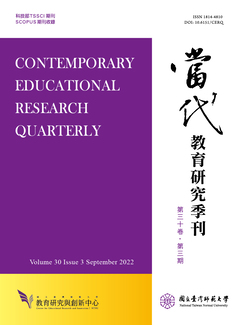

研究目的
本研究旨在探討父母親請育嬰假的行為,與幼兒發展的關係,我們聚焦於幼兒在36月齡和48月齡的發展情形,以及兩個月齡之間發展進步的幅度。
研究設計/方法/取徑
本研究資料來自「臺灣幼兒發展調查資料庫建置計畫」,研究樣本包括1,891位學齡前幼兒,男女比例相當,兩波調查分別於幼兒36月齡及48月齡進行。調查由幼兒主要照顧者填答,79.7%為親生母親,17.5%為親生父親,其餘由其他主要照顧者填答。我們使用主成分分析法篩選幼兒發展之項目,製成認知、語言、社會情緒、身體動作四種發展分數進行最小平方法估計,並以傾向分數配對法處理潛在的內生性問題。
研究發現或結論
在t檢定之下,有經歷父母請育嬰假的幼兒各項發展均較佳,但納入控制變數以及經過傾向分數配對法處理後,育嬰假對於幼兒發展幾乎沒有顯著相關。估計結果顯示其他因素如女性幼兒、母親國籍為臺灣人、是家中第一個出生的幼兒、父母教育程度愈高和家庭月收入中位數以上,與幼兒發展具有顯著正相關。當區分較高收入與較低收入家庭,亦發現女性幼兒的發展優勢在較低收入家庭不存在,母親是臺灣人的發展優勢在36月齡的高收入家庭不存在。育嬰假與36月齡到48月齡的進步幅度亦無顯著關聯。我們認為教育程度較高的父母較可能請育嬰假,這樣的父母亦運用各種資源與努力促進幼兒的發展,可能解釋了為何在完整的迴歸模型中,育嬰假與幼兒發展的關係不再顯著。
研究原創性/價值
育嬰假與幼兒發展之間的關聯,需在考量幼兒的性別與家庭背景上,加以深入探討。
Purpose
This study explores how parents’ choice of taking parental leave relates to preschoolers’ developmental outcomes at 36 months old and 48 months old. We also examine the relationship between parental leave and the developmental progress from 36 months to 48 months old.
Design/methodology/approach
Data come from two waves of the survey of Kids in Taiwan: National Longitudinal Study of Child Development and Care. The observations in this study include 1,891 preschoolers (with an almost balanced gender ratio) when they were 36 months old and 48 months old. All data were reported by the primary caregivers: 79.7% by biological mothers, 17.5% by biological fathers, and the remainder by other caregivers. We use the principal components analysis (PCA) to select variables for the developmental outcomes and propensity score matching (PSM) to mitigate the potential threat of endogeneity from the ordinary least square (OLS) estimations.
Findings/results
Preschoolers whose parents take parental leave show better developmental outcomes in t tests. After controlling for additional variables and applying the PSM, there is almost no statistically significant relationship between parental leave and developmental outcomes. Estimation results suggest that other factors, including female children, Taiwanese mothers, firstborns, the higher education level of parents and higher monthly income, are associated with better developmental outcomes. When we divide the sample into higher- and lower-income families, the developmental advantage of female children does not exist in lower-income families, while the advantage of Taiwanese mothers does not exist in higher-income families when children are 36 months old. The progress between 36 and 48 months is also not significantly correlated with parental leave status. We argue that higher-educated parents are more likely to take parental leave, and these parents may also utilize more resources to promote children’s development. This may explain why we do not observe significant correlations with parental leave in the regression models.
Originality/value
Study on the relationship between parental leave and preschoolers’ developmental outcomes needs to consider children’s gender and the family’s socioeconomic background.

This work is licensed under a Creative Commons Attribution-NonCommercial 3.0 Taiwan License.
Center for Educational Research and Innovation, National Tawain Normal University
162, Ho-Ping East Rd, Sec. 1, Taipei, Taiwan | Tel:+886-2-7749-3670 | E-mail: cerecerq@gmail.com
CERI | NTNU | E-mail Alerts | Open Journal System
© 2014 CERI-NTNU
